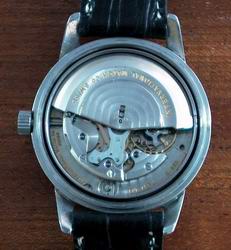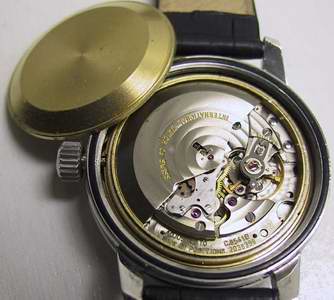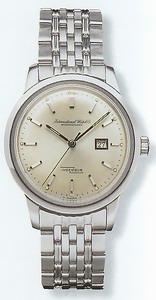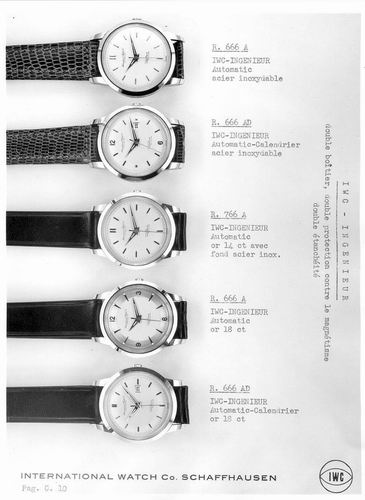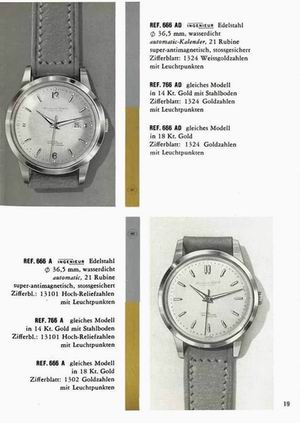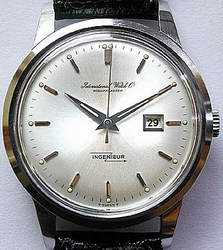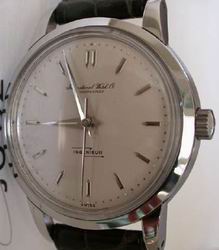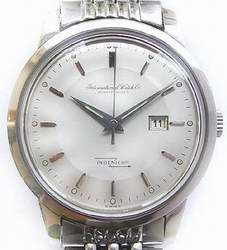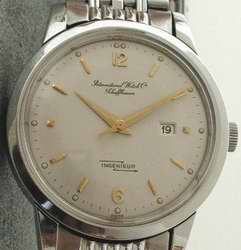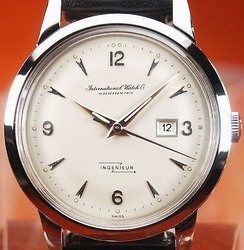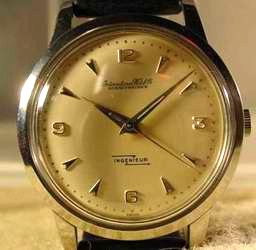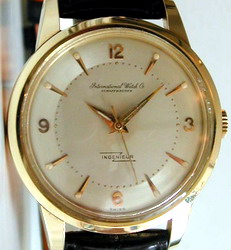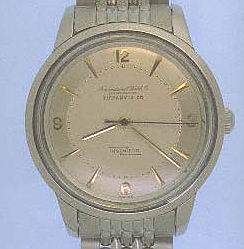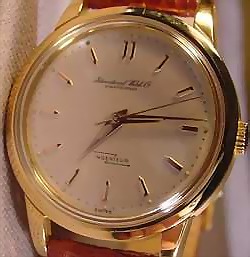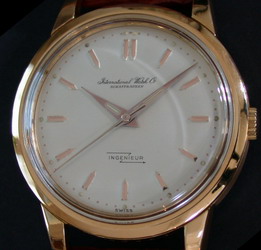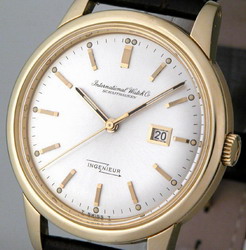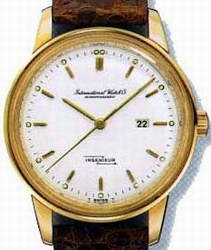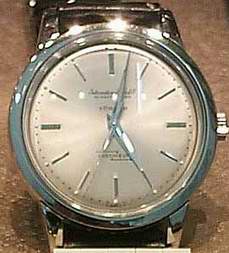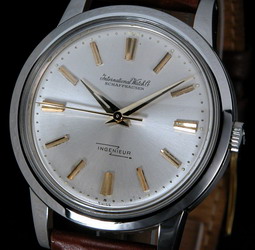| |
THE IWC
INGENIEUR
- Dial Variations In Vintage (Cal. 85x)
Models -
Version 2.0
By: Larry Seiden, Marco
Schönenberger and David
Ter Molen.
(click on most images to
view larger versions)
|
|
1. Introduction 6. 1976-1983: The "Jumbo" Ingenieur SL 7. Epilogue |
|
|
The Ingenieur's genesis dates from 1944 when IWC hired a new technical director, Albert Pellaton. He was responsible for the creation of IWC's first automatic watch, the calibre 81 (subseconds at 6) and the calibre 85 (central seconds, flat overcoil) in 1950. The next generation, the calibre 852 (central seconds, Breguet overcoil) was the first automatic movement encased under a soft-iron core with the Ingenieur name. The Ingenieur was viewed by IWC as the automatic and civilian version of the famous Mark XI, a hand-wound antimagnetic classic whose fame and following grew as a modern pilot's watch. The Ingenieur is not a spectacular or sexy watch nor was its introduction in 1955 widely anticipated. Like the Mark XI, the Ingenieur is about function and the name translates literally to "engineer." However, because it was produced for the civilian market, the Ingenieur was offered in a variety of relatively elegant dial styles, as well as in 18kt and mixed (steel and gold) cases. Today the timeless design of the watch puts it in the "classic" category and is testimony that its appeal has outlasted its long reign as the flagship of the IWC line.
The Ingenieur's desirability among today's collectors is difficult to explain, but its status as one of the earliest "tool" watches, combined with its rarity, technically advanced movement, and timeless design, make the Ingenieur something truly unique. The Ingenieur is also quite large for a vintage watch (36.5-37.2mm for pre-Jumbo Ingenieurs) and its heft (due in part to the soft iron casing) makes it quite a presence on the wrist. To learn more about the
history and evolution the Ingenieur, the best place to start is with
Michael Friedberg's defining piece, IWC's
Ingenieur: An Incomplete History. | |||||||||||||||||||||||||||||||||||||||||||||||||||||||||||||||||||||||||||||||||||||||||||||||||||||||||||||||||||||||||||||||||
|
| |||||||||||||||||||||||||||||||||||||||||||||||||||||||||||||||||||||||||||||||||||||||||||||||||||||||||||||||||||||||||||||||||
|
The old, pre1970's numbering system was based on the case type, with the result that more than one model could be represented by the same number if a case was used with different calibres. The subsequent numbering scheme was premised on the movement calibre instead of case type and may have been a consequence IWC's new practice of outsourcing the production of some movements. Since all watches still in production at the time of the change got a new number, the same model may be represented by two reference numbers. In both schemes, mens models with solid gold bracelets got references numbers in the 9000 range. The various Ingenieur models covered in this article had the following reference numbers: 1st generation: ref. 666 and relatives with calibre 852x/853x:
2nd generation: ref. 866 and relatives with calibre 854x:
3rd generation: Ingenieur "Jumbo" SL with cal. 854x ES or quartz movement:
For a list of all Ingenieur models (including later generations) see this web page. Footnote: Just before the mid-1960s, when the cal. 853x was in use, IWC attempted to implement a referencing scheme with extended numbers (five or six digits). In brief, this scheme was the same as the traditional one but extended the numbers by a digit at the beginning and end. The new last digit signified whether the model had a date or not (with a "1" replacing the AD and "2" replacing A), and the first digit stood for the case material and – again – the movement type as shown below:
Thus a ref. 666 A with steel case became a 56662, while a ref. 9386AD turned into a 993861. See these catalog pages here and here. Needless to say, the new scheme was difficult to read and understand and IWC gave up this numbering scheme by, at the latest, 1966. As previously discussed, another referencing scheme was implemented around 1970/71.
|
|
||||||||||||||||||||||||||||||||||||||
|
|
Powered by counter.bloke.com


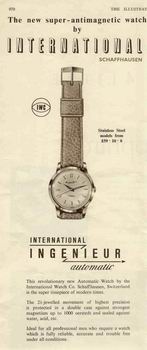
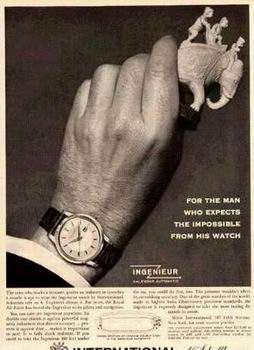
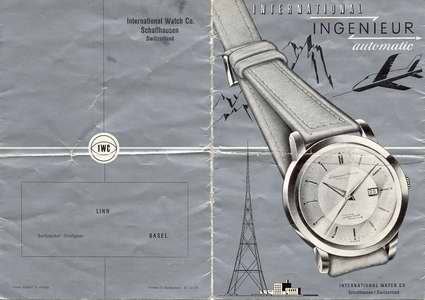
 The
famous Ingenieur logo of the arrow passing through the name
is reminiscent of the Swiss thunderbolt icon that warns
of an electrical current's presence.
The
famous Ingenieur logo of the arrow passing through the name
is reminiscent of the Swiss thunderbolt icon that warns
of an electrical current's presence.